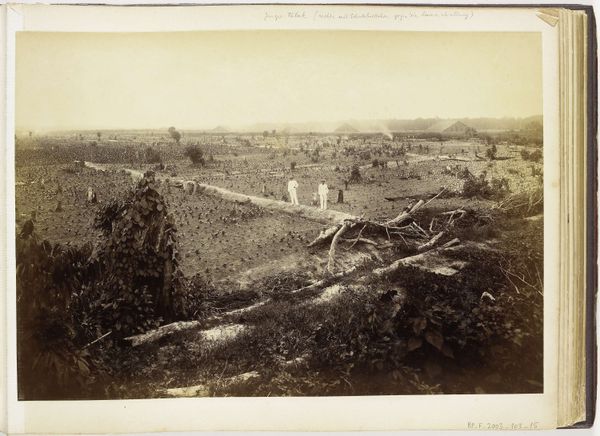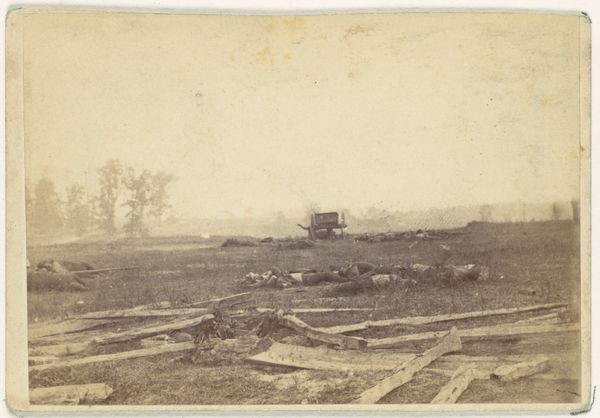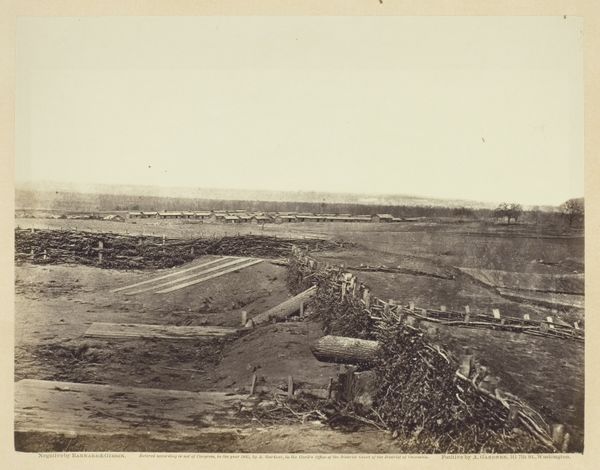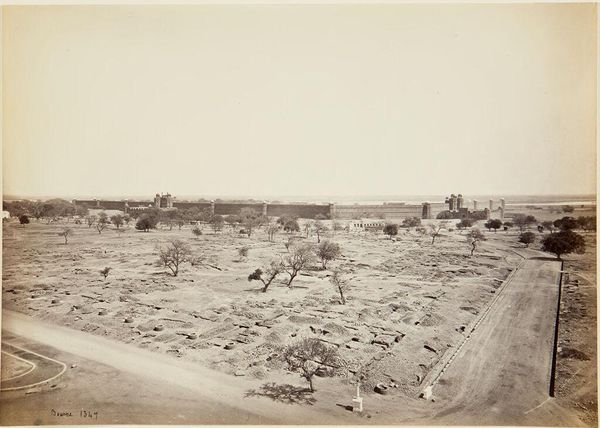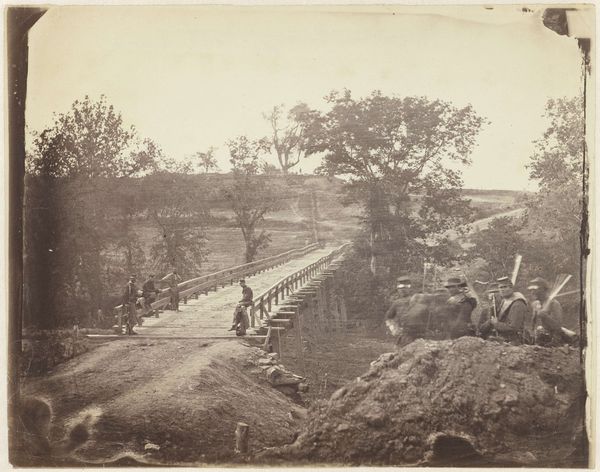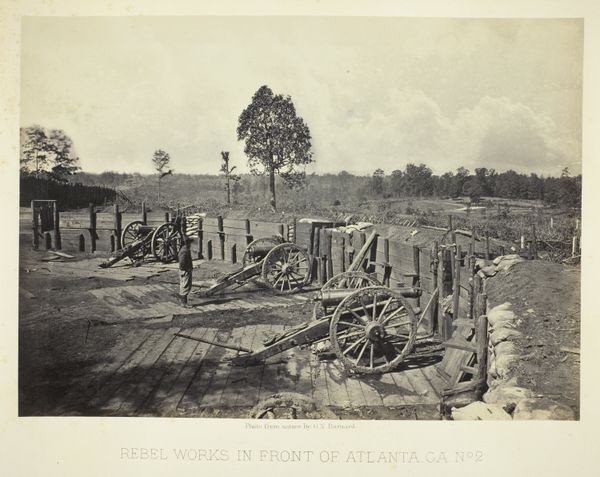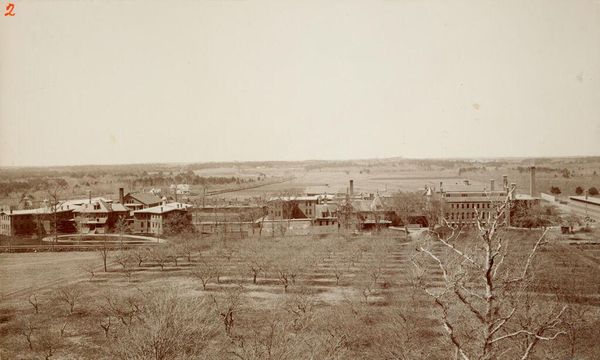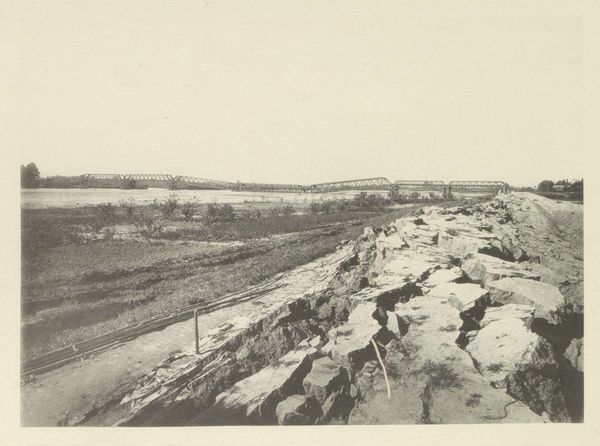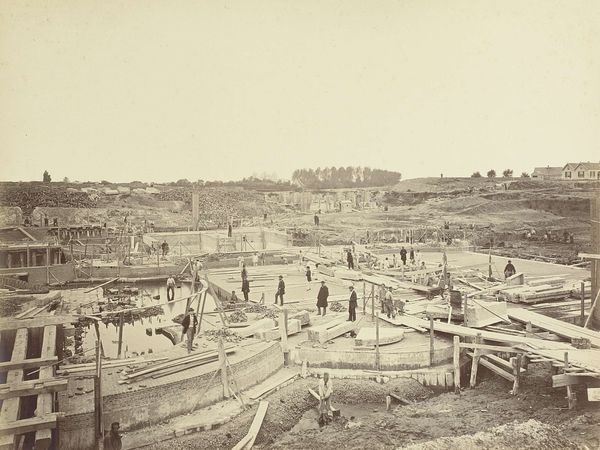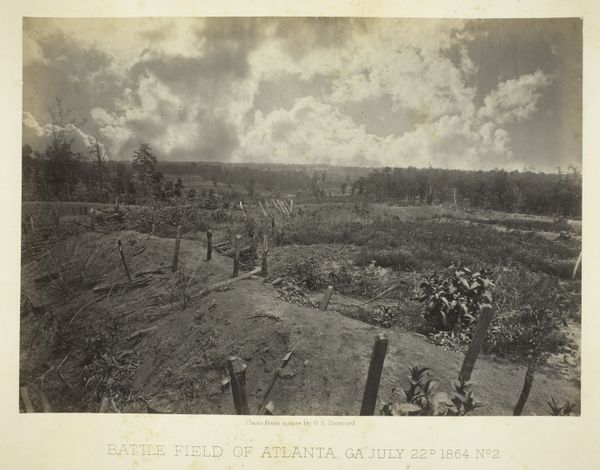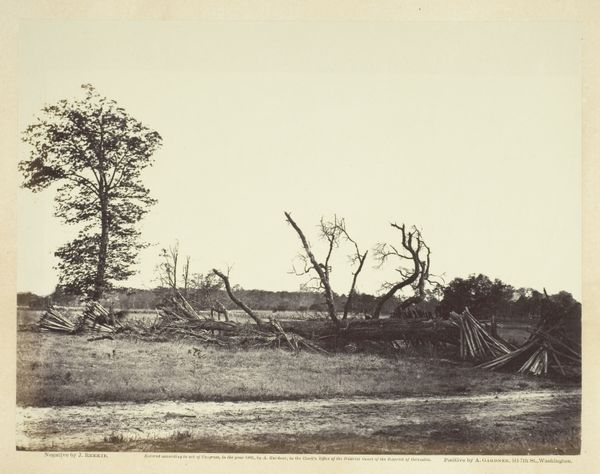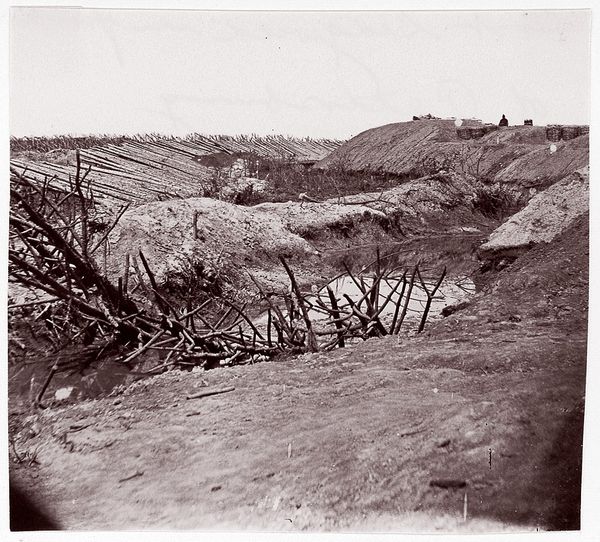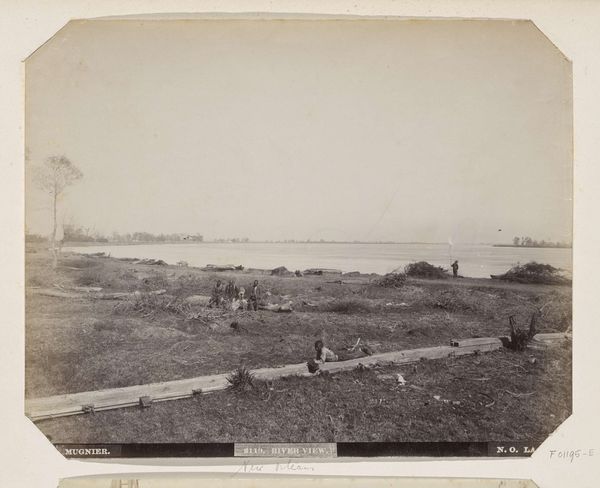
print, photography, gelatin-silver-print
16_19th-century
war
landscape
photography
historical photography
gelatin-silver-print
19th century
men
united-states
history-painting
Dimensions: 17.3 × 22.6 cm (image/paper); 31.2 × 44.5 cm (album page)
Copyright: Public Domain
Editor: This gelatin silver print, "Ruins of Stone Bridge, Bull Run," was captured by Barnard & Gibson in 1862. It's striking how the desolation of war is so clearly present in the ruined bridge and barren landscape. What story do you think this image is telling? Curator: This photograph, taken shortly after the First Battle of Bull Run, offers a powerful commentary on the romanticization of war often seen in earlier paintings. Consider the context: photography was still a relatively new medium. Its purported objectivity offered a stark contrast to the heroic narratives artists often crafted. This image directly confronts the viewer with the devastating consequences of conflict, doesn’t it? Editor: It definitely does. The ruined bridge is a powerful symbol, but is that solitary figure just watching, or does it play another part in this story? Curator: Precisely. He seems like an observer amidst the destruction. Note how the photographer has framed the image: The bridge occupies the foreground, emphasizing its importance, while the distant figure perhaps represents the lasting human impact of such events. Does it make you consider the socio-political tensions that shaped this specific conflict? Editor: Yes, absolutely. Knowing this photograph was taken during the Civil War period brings even greater weight to the devastation captured. Curator: And think about the intended audience. These images were often circulated to inform the public, potentially influencing opinions about the war. Its circulation through photography creates a stark comparison of what citizens might expect from battle, rather than how gruesome and real conflict can truly be. Does that change your opinion? Editor: It shifts it towards a more comprehensive understanding of the photograph's function and effect at the time. I hadn’t fully considered the public role it played. Thanks. Curator: It’s a crucial aspect! We shouldn't only regard images as mere representations of historical events but powerful elements in shaping public sentiment and memory.
Comments
No comments
Be the first to comment and join the conversation on the ultimate creative platform.
